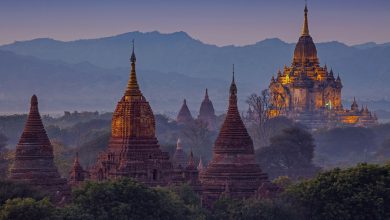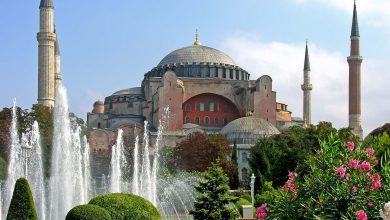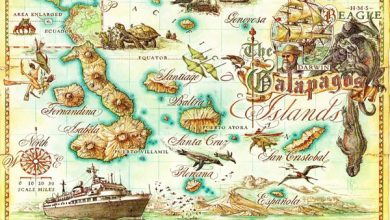Amazon Forest History.

The Amazon Forest, also known as the Amazon Rainforest, has a history spanning millions of years. It is one of the world’s most biodiverse ecosystems.
The Amazon Rainforest covers around 5. 5 million square kilometers, primarily in Brazil but also in Peru, Colombia, and other South American countries. Its rich history includes being home to ancient civilizations long before European explorers arrived. Indigenous tribes have inhabited the region for thousands of years, living in harmony with its vast resources.
The forest plays a crucial role in regulating the Earth’s climate and houses millions of plant, animal, and insect species. Modern threats like deforestation and climate change endanger this vital ecosystem, making conservation efforts essential for its survival.

Credit: www.amazon-rainforest.org
Ancient Origins
The Amazon Forest is one of the world’s oldest forests. Its history dates back millions of years. Let’s explore its ancient origins.
Formation
The Amazon Forest began forming about 55 million years ago. During this period, the Earth’s climate was warm and wet. This created perfect conditions for lush plant life to grow.
Scientists believe that the forest started as a small area of trees. Over time, it expanded to cover much of South America. The forest’s formation was influenced by tectonic plate movements. These movements created the Andes mountains, which affected the climate and water flow.
Today, the Amazon is the largest rainforest in the world. It is home to diverse species of plants and animals.
Early Inhabitants
The Amazon Forest was not always uninhabited. Early humans lived in the forest thousands of years ago. Archaeologists have found evidence of ancient communities. These people relied on the forest for food, shelter, and resources.
Early inhabitants practiced sustainable living. They hunted animals and gathered fruits and nuts. They also cultivated small plots of land.
These communities left behind pottery, tools, and other artifacts. This evidence helps us understand their way of life. The Amazon’s early inhabitants were skilled in using the forest’s resources without harming it.
Here is a table summarizing key points:
| Period | Event |
|---|---|
| 55 million years ago | Formation of the Amazon Forest |
| Thousands of years ago | Early human inhabitants |
The ancient origins of the Amazon Forest are fascinating. Understanding its formation and early inhabitants helps us appreciate its history and importance.

Credit: www.rainforestpartnership.org
Colonial Impact
The Amazon Forest has a rich history influenced by colonial powers. This impact shaped the region, its people, and its environment. Let’s explore the significant aspects of this historical period.
European Exploration
European explorers arrived in the Amazon in the 16th century. Their arrival marked the beginning of significant changes. Spaniards and Portuguese were the first to explore the vast forest. They mapped the region and interacted with indigenous tribes.
Explorers searched for gold and spices. These resources were valuable in Europe. Their expeditions often led to conflicts with native people. They also introduced new diseases which devastated indigenous populations.
Resource Exploitation
Colonial powers exploited the Amazon’s vast resources. Rubber and timber were among the most sought-after. The rubber boom in the late 19th century brought many changes. European colonists forced locals to work in harsh conditions. This period saw the rise of rubber barons who became very wealthy.
Logging also started during this time. Large areas of the forest were cleared. This caused significant deforestation. The exploitation of resources had a lasting impact on the Amazon. It changed the region’s ecology and culture.
Modern Challenges
The Amazon Forest faces many modern challenges. These challenges threaten its biodiversity and ecosystem. The two main issues are deforestation and efforts to protect the forest.
Deforestation
Deforestation is a major problem for the Amazon. Many trees are cut down every day. This destroys animal habitats and reduces oxygen levels. The main causes of deforestation are:
- Agriculture: Farmers clear land for crops and livestock.
- Logging: Companies cut trees for wood and paper products.
- Mining: Miners clear land to extract minerals.
Deforestation also leads to soil erosion. This makes it hard for plants to grow back. Climate change is another effect of deforestation. Trees absorb carbon dioxide. Without trees, more carbon dioxide stays in the air.
Conservation Efforts
Many groups are working to save the Amazon. They use different methods to protect the forest. Some key conservation efforts include:
- Protected Areas: Governments set up national parks and reserves.
- Reforestation: People plant new trees in cleared areas.
- Sustainable Practices: Farmers and loggers use eco-friendly methods.
- Education: Schools teach kids the importance of the Amazon.
These efforts help reduce deforestation. They also promote a healthy ecosystem. Many organizations work with local communities. This ensures that conservation is effective and sustainable.
Here is a summary table:
| Challenge | Action |
|---|---|
| Deforestation | Protected Areas |
| Climate Change | Reforestation |
| Soil Erosion | Sustainable Practices |
| Loss of Biodiversity | Education |
Cultural Significance
The Amazon Forest is not only a treasure trove of biodiversity. It also holds immense cultural significance. This vast region has been home to numerous indigenous tribes for centuries. Their traditions, myths, and legends are woven into the fabric of the forest.
Indigenous Tribes
The Amazon Forest is home to over 400 indigenous tribes. Each tribe has its own unique culture and language. These tribes have lived in harmony with nature for generations.
- Yanomami: Known for their communal lifestyle and deep forest knowledge.
- Ticuna: Famous for their vibrant festivals and rituals.
- Kayapo: Renowned for their environmental activism.
Myths And Legends
The Amazon is rich in myths and legends. These stories are passed down through generations. They offer insight into the beliefs and values of the tribes.
- The Legend of El Dorado: A mythical city of gold hidden in the forest.
- The Anaconda Spirit: A giant snake said to protect the rivers.
- The Curupira: A forest guardian with backward feet, protecting wildlife.
These myths and legends reflect the deep connection between the tribes and their environment. They also highlight the importance of preserving this rich cultural heritage.

Credit: www.rainforestcruises.com
Frequently Asked Questions
What Is The Amazon Forest?
The Amazon Forest is the world’s largest tropical rainforest, covering over 5. 5 million square kilometers in South America.
How Old Is The Amazon Forest?
The Amazon Forest is estimated to be around 55 million years old, making it one of the oldest rainforests on Earth.
Why Is The Amazon Forest Important?
The Amazon Forest plays a crucial role in regulating the global climate and is home to millions of plant and animal species.
How Has The Amazon Forest Changed?
The Amazon Forest has faced significant deforestation and environmental challenges, impacting biodiversity and climate over the past decades.
Conclusion
The Amazon Forest holds a rich and diverse history that fascinates many. Its unique ecosystems and ancient civilizations offer endless exploration opportunities. Preserving this natural wonder is crucial for future generations. Understanding its past helps us protect its future. The Amazon Forest is a vital part of our planet’s heritage.



